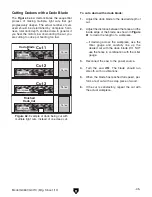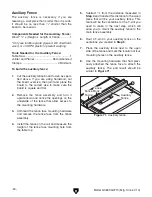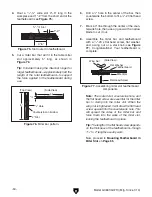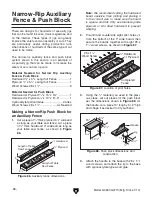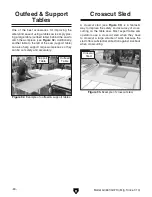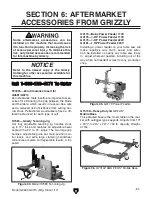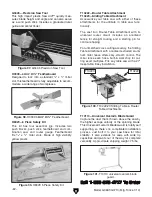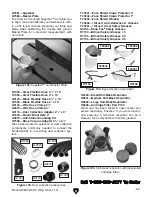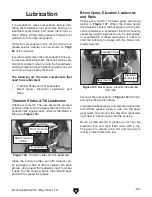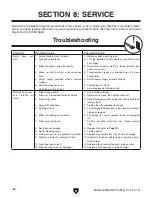
Model g0661/g0713 (Mfg. since 1/10)
-59-
using the Auxiliary Fence and push
Block
1. place the auxiliary fence on the table and
clamp it to the fence at both ends, then adjust
the distance between the auxiliary fence and
the blade—this determines how wide the
workpiece will be ripped (see
Figure 89).
2. install the blade guard, then remove the
spreader pawls, as explained on
page 39, so
they do not interfere with the push block lip.
Ldg`e^ZXZ
8jii^c\L^Yi]
7aVYZ
6jm^aa^Vgn;ZcXZ
Figure 89. adjusting ripping distance between
blade and auxiliary fence.
Keep the blade guard installed and in the
down position. Failure to do this could
result in serious personal injury or death.
Turn the saw
OFF
and allow the blade to
come to a complete stop before removing
the cut-off piece. Failure to follow this warn-
ing could result in serious personal injury.
3. place the workpiece 1" behind the blade and
evenly against the table and the auxiliary
fence.
6jm^aa^Vgn;ZcXZ
7aVYZ
Ldg`e^ZXZ
Ejh]Hi^X`
[dgH^YZ
Hjeedgi
7aVYZEVi]
Ejh]
7adX`
Figure 90. push block in position to push
workpiece through blade.
4. turn the saw
ON
, then begin ripping the
workpiece using a push stick for side sup-
port.
as the workpiece nears the end of the cut,
place the push block on the auxiliary fence
with the lip directly behind the workpiece,
then release the push stick just before it is
even with the blade (see
Figure 91).
guide the workpiece the rest of the way
through the cut with the push block, then re-
install the pawls on the spreader when cutting
operations are finished.
Ejh]
7adX`
A^e
GZaZVhZ
Ejh]Hi^X`
7Z[dgZ7aVYZ
7aVYZEVi]
Figure 91. ripping with push block.

